 The SCAR Open Science Conference that will take place from 1 to 10 August 2022, is SCAR’s flagship event that brings together researchers to engage with one another, exchanging the latest scientific findings in the Antarctic and the Southern Ocean while those outside of the field of research come to find out about what SCAR does in and for the Antarctic. Considering circumstances surrounding the pandemic as well as SCAR’s effort to reduce carbon footprint the organizing committee decided to move the meeting online. Following the SCAR OSC 2020 in Hobart, the OSC 2022 will be hosted in Hyderabad, India in an online format.
The SCAR Open Science Conference that will take place from 1 to 10 August 2022, is SCAR’s flagship event that brings together researchers to engage with one another, exchanging the latest scientific findings in the Antarctic and the Southern Ocean while those outside of the field of research come to find out about what SCAR does in and for the Antarctic. Considering circumstances surrounding the pandemic as well as SCAR’s effort to reduce carbon footprint the organizing committee decided to move the meeting online. Following the SCAR OSC 2020 in Hobart, the OSC 2022 will be hosted in Hyderabad, India in an online format.
The National Centre for Polar and Ocean Research (NCPOR), an autonomous organization under the Ministry oh Earth Science (MoES), Government of India, takes pride and pleasure in hosting the 2022 SCAR Meetings. The SCAR Open Science Conference, established 20 years ago, has in many ways become the premier activity of SCAR that supports its mission to promote and facilitate international Antarctic and Southern Ocean science. These biennial meetings have become fertile ground for the exchange of the latest and highest profile Antarctic research outcomes and a place where future collaborations are born. The structure and format for the conference has evolved over the years to enhance attendees’ experiences and optimize impact. Recent global events have required innovation and a re-thinking of the delivery and format for the Conference as most of the world’s meeting places went online. At the same time, SCAR has committed to ensuring that its activities are conducted in a manner that minimizes its carbon footprint by example as a lead scientific advisor on global climate change. To this end this year’s conference will once again be online.
Check also: https://scar2022.org/registration/
Source: SCAR 2022 | Virtual

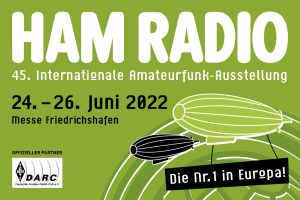 Friedrichshafen , Germany, Saturday, June 25, 2022.
Friedrichshafen , Germany, Saturday, June 25, 2022.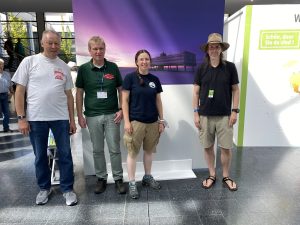 There was an interesting Antarctic presentation about DPØGVN activities by Felix DL5XL, Theresa DC1TH and Andreas DL3LRM and a cool meeting of Antarctic Overwinterers.
There was an interesting Antarctic presentation about DPØGVN activities by Felix DL5XL, Theresa DC1TH and Andreas DL3LRM and a cool meeting of Antarctic Overwinterers.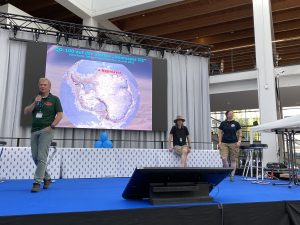
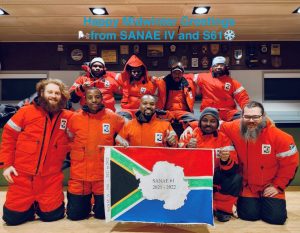 Midwinter’s Day has been observed in Antarctica since the ‘heroic age’ of Antarctic exploration and is a highpoint in the winter season for all those who endure the extreme conditions and twenty-four-hour darkness in the name of scientific research.
Midwinter’s Day has been observed in Antarctica since the ‘heroic age’ of Antarctic exploration and is a highpoint in the winter season for all those who endure the extreme conditions and twenty-four-hour darkness in the name of scientific research. Almirante Brown 64º 53’ South, 62º 53’ West is an Argentine Antarctic Base (
Almirante Brown 64º 53’ South, 62º 53’ West is an Argentine Antarctic Base (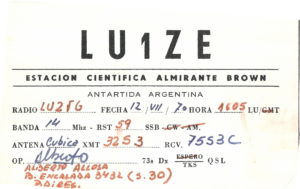 As of 2014 Brown is one of 13 research Bases in Antarctica operated by Argentina. From 1951 to 1984 it served as a permanent base; since then it is open during the summer season only.
As of 2014 Brown is one of 13 research Bases in Antarctica operated by Argentina. From 1951 to 1984 it served as a permanent base; since then it is open during the summer season only. Not so many Ham radio activities has been made from this Base so that Brown remains one of the most rare Argentine Base sto log .
Not so many Ham radio activities has been made from this Base so that Brown remains one of the most rare Argentine Base sto log . 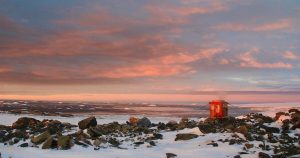 Jack’s Donga
Jack’s Donga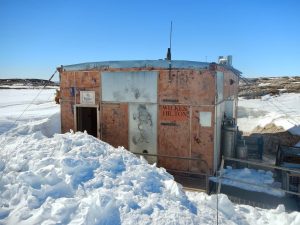 Wilkes Hilton
Wilkes Hilton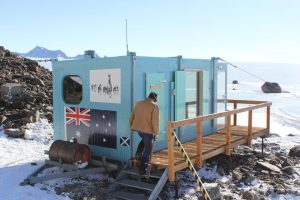
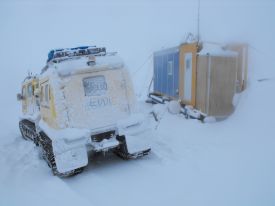 Browning Peninsula Hut
Browning Peninsula Hut

 At June 2, 2022 the german Deutsche Post did issue a new stamp in the series
At June 2, 2022 the german Deutsche Post did issue a new stamp in the series 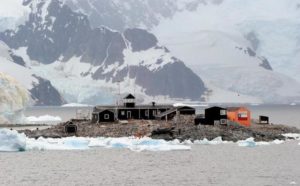 Chile’s Gonzales Videla Antarctic Base (WAP CHL-Ø6) is located at Waterboat Point, the low westernmost termination of the peninsula between Paradise Harbot and Andvoy Bay on the west coast of Graham Land. This feature has “island” characteristics, but it is only separated from the mainland at high water and it’s more usefully described as a “point”.
Chile’s Gonzales Videla Antarctic Base (WAP CHL-Ø6) is located at Waterboat Point, the low westernmost termination of the peninsula between Paradise Harbot and Andvoy Bay on the west coast of Graham Land. This feature has “island” characteristics, but it is only separated from the mainland at high water and it’s more usefully described as a “point”. Time ago,
Time ago,  On last weekend of May 2022, about two hundred people, the vast majority with their families, visited the Chilean Antarctic Institute (
On last weekend of May 2022, about two hundred people, the vast majority with their families, visited the Chilean Antarctic Institute (